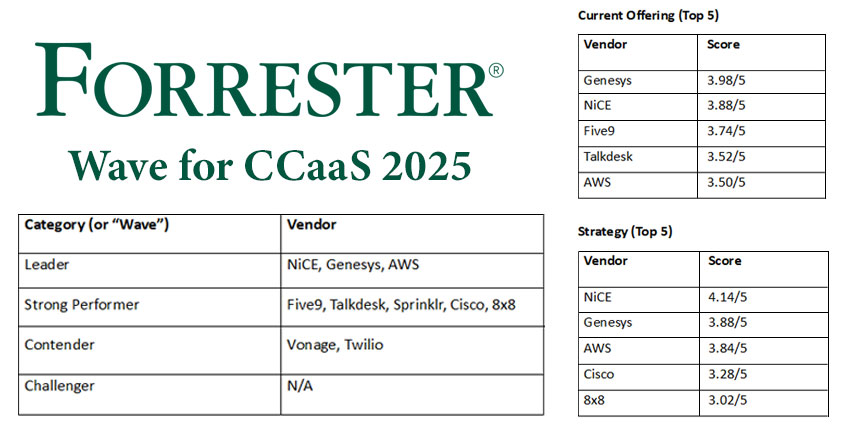If contact centers can cut down the time it takes agents to handle queries, they lower the staffing requirement, as agents can resolve more queries over the course of the day. As such, the business may achieve significant cost savings.
Yet, the idea of reducing AHT has come under disrepute in recent years, with supervisors pressuring agents to rush through calls. Such a practice may lower AHT, but it is not conducive to excellent customer service. What’s more, efficiency will suffer as first contact resolution (FCR) rates slump.
Nevertheless, this does not mean that reducing AHT is a shoddy objective. Instead, it highlights that contact centers should stay cautious when doing so. They must consider how initiatives to decrease AHT will impact customer and agent experiences.
With this in mind, here are ten excellent ideas that will not only reduce handling times but delight customers and agents alike.
1. Get Info Upfront
When a customer waits in the call queue, use the IVR or a voicebot to collect information – such as a delivery or order number – which is likely relevant to their call reason.
In doing so, agents no longer have to ask customers for this information during the interaction; it is already waiting for them. Such a process then streamlines the interaction.
At the very least, agents can ask for these details at the start of the call instead of at different points during the interaction. Of course, this depends on how well the agent understands the call handling process. Yet, if they know, they can also ask more closed questions – as opposed to open questions – to speed up the interaction.
2. Simplify Knowledge Management
Review the knowledge base using agent feedback and KPIs to highlight missing information, ensuring there are no significant knowledge gaps that make the resolution process tricky. Correct these, and consider the most common customer queries, ensuring the knowledge base caters for them.
Next, create a style guide for knowledge articles, so agents can immediately get to grips with the format. Other excellent tips are to appoint a knowledge manager, enhance the search function with AI, and set alerts to revisit pieces of information after a particular period to ensure it is still relevant. All these ideas may help agents speed up call resolution.
3. Shrink Wrap Time
Wrap time is the short period after a customer conversation ends where agents type up their after call notes into the CRM system. It is included within AHT, as the agent is still actively working on the query.
Contact centers can shrink wrap-up time by coaching abbreviations. For example, typing “DLVY” instead of “delivery” or “CUST” as opposed to “customer” can shave invaluable seconds from every call.
Yet, a more effective method is to automate the process. Speech analytics tools generate a call summary, extract critical data, export it to associated systems, and so on. These functionalities massively simplify the agent role.
4. Deploy Agent Assist
On the topic of streamlining the agent experience, agent-assist is an AI-enabled technology that enables contact centers to do just that.
Embedded within the agent desktop, it follows customer conversations before presenting agents with relevant data from contact center systems and pertinent knowledge articles.
The person taking the call can refer to this information to attend to the customer more effectively, leading to quicker call resolution.
5. Upgrade Call Routing
A common reason for high AHT is that the call does not reach the appropriate agent in the first instance.
By harnessing customer data, contact centers may turn to predictive routing and match customers with agents based on numerous factors. These may include customer satisfaction, predicted needs, and documented agent capabilities like knowledge of a specific language.
6. Simplify the Agent Desktop
According to a 2018 Gartner study, agents access 8.2 different systems and tools every day to overcome customer queries. Providing these in one convenient platform saves times as it reduces the number of clicks agents take to navigate the systems architecture.
A unified desktop often proves particularly useful for new employees, significantly reducing the learning curve that comes with working in the contact center.
7. Identify and Address Dead Air Time
Dead air time refers to awkward gaps and silences during a call when neither the agent nor the customer speaks. It not only adds to the average handling time but also impacts the call experience.
Contact center managers and coaches can specifically train agents to address dead air by asking the right questions, describing what they are doing, and perhaps informing customers of promotions.
8. Regularly Reassess Call Scripts
An incorrect or improperly aligned script can waste precious time during a call. For instance, it could cover steps that are no longer necessary in the query resolution process. Or, it could ask the customer to provide information already available to the agent.
Such scenarios are common when managers fail to review scripts, especially as the contact center ecosystem and company product offerings evolve
9. Leverage Cross-Channel Information
Customers do not like repeating the same information multiple times on different channels. Repeating information also adds to the average handling time.
By instead providing agents with cross-channel information and data gathered across the entire customer journey so far, agents gain an accurate understanding of customer context. An omnichannel contact center solution enables this.
10. Tackle Agent Attrition
High attrition is a classic contact center issue, negatively influencing handling times as experienced agents leave the business and operations constantly coach recruits. These newbies will likely have high AHT rates – particularly for the first couple of months.
To combat attrition, contact centers can actively identify and address sources of agent stress, create individual development plans for agents, and enhance rewards and recognition programs. Doing so will not only lower handling times but cut recruitment costs too.
A Bonus Tip – Create a QA Initiative
Engage with QA analysts and encourage them to consider conversation time that adds little value to the service experience within their call assessments.
Of course, if the small talk enables agents to build rapport or paper over dead air time, it does bring value. Yet – at the end of a call – if the agent talks to the customer about the weather for two minutes, maybe it’s time for a quick refresher on call closing.
Refresh yourself on the basics of AHT by reading our article: How to Measure Average Handling Time?







